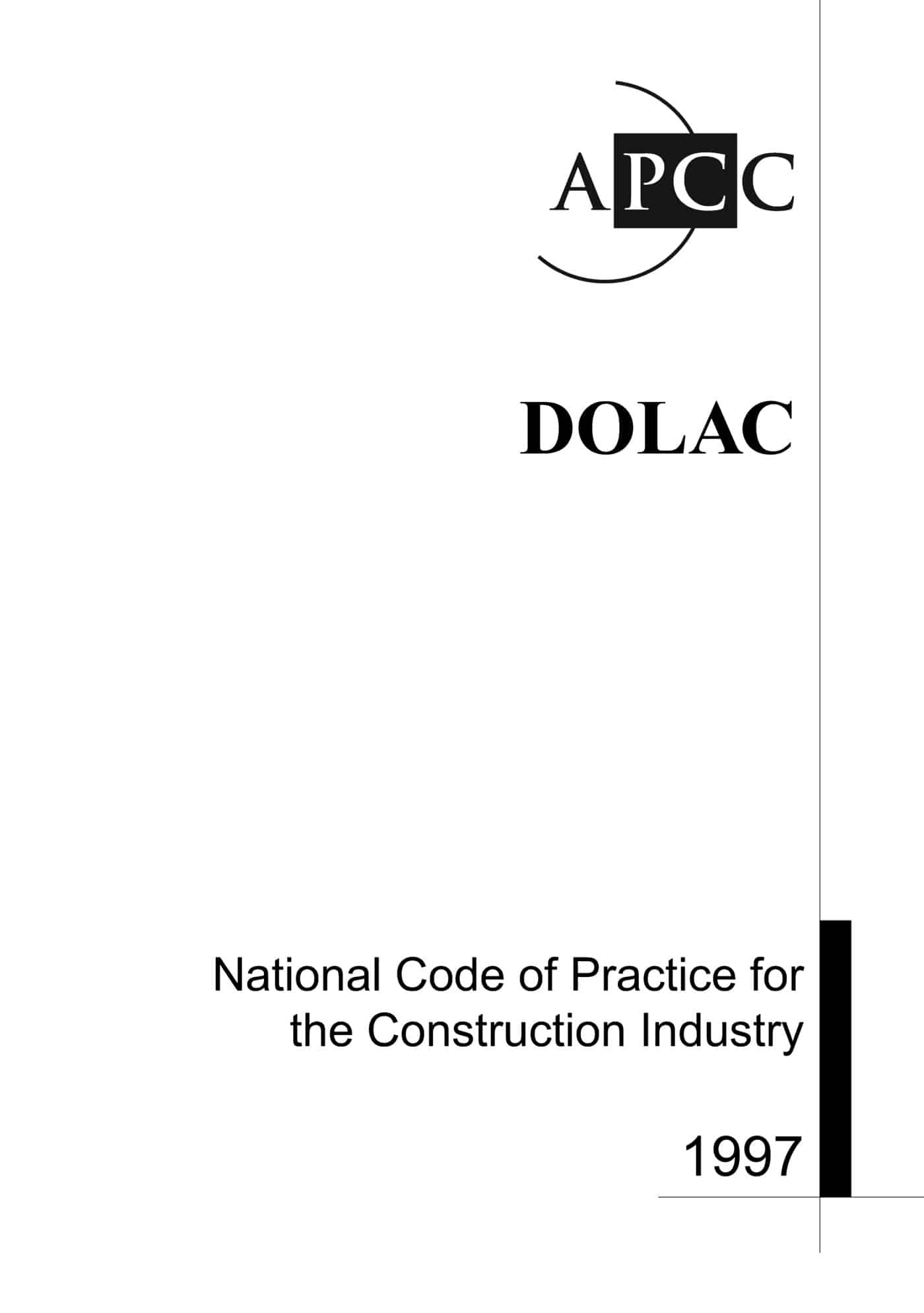 In late August 2012 at a breakfast seminar, the Director of Construction Code Compliance, Nigel Hadgkiss outlined the 1999 Victorian Code of Practice for the Building and Construction Industry, which complements a 1997 National Code, and recently released implementation guidelines being imposed on many Victorian construction companies by the Liberal Government. The Code and implementation guidelines are ostensibly about industrial relations or, as Australia is increasingly calling them, workplace relations but do contain some interesting safety elements.
In late August 2012 at a breakfast seminar, the Director of Construction Code Compliance, Nigel Hadgkiss outlined the 1999 Victorian Code of Practice for the Building and Construction Industry, which complements a 1997 National Code, and recently released implementation guidelines being imposed on many Victorian construction companies by the Liberal Government. The Code and implementation guidelines are ostensibly about industrial relations or, as Australia is increasingly calling them, workplace relations but do contain some interesting safety elements.
An intriguing element of the Code and guidelines is the introduction of a workplace culture through contract obligations and how this may affect workplace safety.
Hadgkiss stated, according to a copy of his presentation, that
“Where a party tenders for public work called for after 1 July 2012, the party is required to comply on any subsequent privately funded work.”
 This quote means that any company that applies for a Victorian Government contract, of specific costs and other criteria, must comply with the Code. Any client is entitled to impose their own contractual conditions. The obligation that “the party is required to comply on any subsequent privately funded work” means that even if the contractor or party fails to win the contract it tendered for its management of any subsequent project, even one from non-government funding, must also comply with the Code.
This quote means that any company that applies for a Victorian Government contract, of specific costs and other criteria, must comply with the Code. Any client is entitled to impose their own contractual conditions. The obligation that “the party is required to comply on any subsequent privately funded work” means that even if the contractor or party fails to win the contract it tendered for its management of any subsequent project, even one from non-government funding, must also comply with the Code.
One of the four priority elements of the Code is occupational health and safety, so OHS requirements will spread from principal contractor, or tenderer, to contractor, sub-contractors and sub-sub-contractors like a virus or an “ITI”, an industry-transmitted infection. However this OHS infection is a good infection, perhaps it should be called a safety vaccination program.
The safety vaccination process could be interpreted as an acknowledgement by the Victorian Government that the establishment of appropriate OHS standards through the process-du-jour, safety leadership, has failed and that positive change needs regulatory motivation, or, in reality, a regulatory-based market mechanism, if there can be such a concept. It may also be that the government has simply grown impatient with the slow rate of leadership-driven cultural change.
 The Victorian Code has core principles that industry:
The Victorian Code has core principles that industry:
- “is client-focused and respects the rights of clients
- builds relationships on a foundation of trust
- observes the highest ethical principles in tendering
- maintains a positive commitment to continuous improvement and best practice
- supports broadly-based workplace reform
- maintains high standards in occupational health safety and rehabilitation and in environmental management, and
- encourages responsible industrial relations leading to economically-sustainable arrangements.”
These principles almost all fit with existing contemporary corporate values but the kicker, and the principle gaining most contention, is the last one as some have interpreted this as relinquishing some worker rights for the purpose of increased profitability. The industrial relations argument seems to be overriding the other principles, including OHS, and this is a considerable shame.
Nigel Hadgkiss acknowledges that the OHS obligations of the Code need more clarity and guidance. The Construction Compliance Code Unit (CCCU) is finalising a draft or model Health and Safety Management Plan (HSMP) which will reflect the principles and obligations of the Code. Many of the large construction companies are likely to already meet the HSMP’s safety elements but given the projected spread of the Code to the majority of Victorian construction companies, the HSMP could be a substantially important document.
It is a peculiar decision for a government to release a “template” HSMP. Mostly OHS elements are specified for companies to incorporate in their own existing management plans or from which OHS management plans can be built. This HSMP will provide a structure for the OHS management plans of smaller construction companies but runs the risk of being seen as all these companies need to do. Safety is about exceeding compliance as compliance is a minimum safety standard. How the CCCU will motivate smaller companies to innovate and aim beyond compliance is unclear but a great deal of expectation is placed on the principle, and larger, contractors.
There is likely to be some confusion in the marketplace on the potential enforcement role of the CCCU and how this fits with the duties and strategies of the local OHS regulator, WorkSafe Victoria. Hadgkiss was adamant that the CCCU does not enforce safety laws as that is the role of WorkSafe. The CCCU sees itself as the client’s representative and will use the HSMP as the benchmark against which safety performance and management will be judged – not a dissimilar process to that which currently applies for many government contracts. The HSMP will be part of the commercial “promises” made to the Client in order to gain a construction contract. The CCCU will be visiting worksites to ensure that those safety promises are met in a process that could be described as commercial compliance. Sanctions are available within the Code but it is in the Client’s best interest to assist any contractor to meet its promises in order to achieve completion of the project. Swapping contractors in mid-project could generate months of delay to any construction project and a major purpose of the Code was to decrease such construction industry costs.
In some sections of the construction industry Hadgkiss will be treated with suspicion due to his previous role as Deputy Commissioner of the Australian Building and Construction Commission (ABCC) but at the breakfast seminar last week, he spoke almost passionately about the need to improve workplace safety in Victorian companies and he sees the safety components of the Code as a major positive element. The challenge will be to achieve these potential safety improvements within the, more contentious, industrial relations obligations in the Code. Hadgkiss’ current, peripheral, role in the Grocon dispute has been in industrial relations, understandably, but the dispute has not provided the opportunity to mention the positive safety elements of the Code.
Hadgkiss also said, at the seminar in response to a question from SafetyAtWorkBlog, that during his time with the ABCC he observed spurious OHS issues being used for industrial motives. He acknowledged that one impact of this was that it devalued the significance of OHS. Hadgkiss acknowledged that safety can save lives and should be applied with this aim.
The other challenge for the CCCU and the Victorian Government will be a more general political one – convincing the public that the government is serious about workplace safety whilst still refusing to embrace the national model Work Health and Safety legislation. The national laws are not required to achieve safety in workplaces (safety is achieved through management and can be achieved without laws, but rarely is) but the public will question the government’s, and by inference the CCCU’s, safety commitment if there is not national uniformity of OHS laws.
There is great potential for positive OHS change through the implementation of the Victorian Code but the realisation of this potential requires a detailed and sustainable strategy that can address the industrial relations weight in the Victorian Code. The Code needs to be seen as more than an industrial relations tool applied by a Conservative government. It should also be structured for the long term and be able to continue to function effectively through varying political ideologies. Establishing the Code on the basis of commercial compliance and contract obligations would allow for this longevity and sustainability and would fit with the increasingly important OHS due diligence obligations in Work Health and Safety laws being introduced in Australian States.

Although the Victorian Gov\’t through the obligations of this code is trying to \’clean up\’ the construction industry in similar manner to the Office of the Federal Safety Commissioner, (having worked for a few principal contractors with OFSC accreditation, I think it is largely ineffective, despite what statistics may be trotted out), I think it will make companies think further about tendering for a gov\’t contract. Is this what the Victorian Gov\’t wants, to discourage tenders?
Safety Pete, this is possible but most of the 1st and 2nd tier contractors should already meet the CCCU safety requirements, IMO.
So, if a construction company seeks work that is funded by the Victorian government it must demonstrate compliance with the Victorian Code of Practice for the Building and Construction Industry for all its other work irrespective of the funding arrangements? I guess its also subject to audits on these jobs. If it is working on large Commonwealth funded jobs the company must also demonstrate conformance with the FSC requirements which also audited. If the company is then third party certified it is subject to yet another set of audits and so the list could go on. It appears as if construction companies are going to be so occupied with preparing for audits, conducting audits, dealing with the aftermath of audits that they\’re not going to have a lot of time left over to actually construct anything.
Dave, I think the intention is to coordinate CCCU audits with FSC, other clients and internal but this was not discussed.
does this apply to local government as well ? and is there any connection to the industrial problems in Melbourne at the moment, as there are claimed through the fog some oh&s issues
The way the Code is structured, the OHSand Code obligations will flow through to local government via the contractors\’ local government uses.